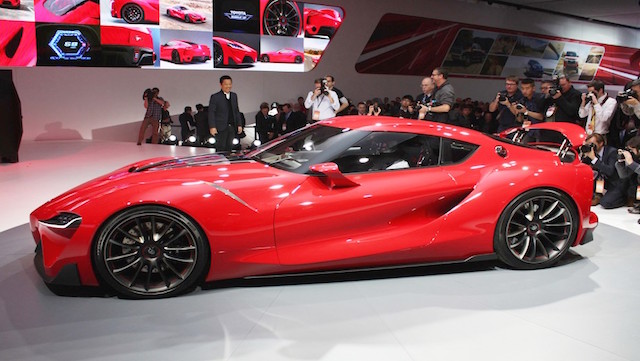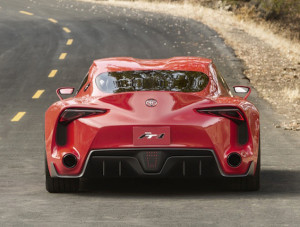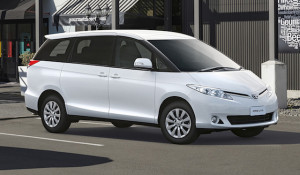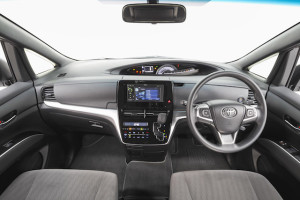
A Toyota Supra will take on the Honda NSX and Nissan GT-R in a battle for supercar supremacy between the Japanese carmakers.
Toyota has moved to resurrect the Supra name, last used in 2002. Its headquarters in Japan has applied for trademark protection for the moniker from intellectual property offices in Australia and Europe.
The applications were lodged in June, evidence that Supra will almost certainly be available in both left- and right-hand drive.
Toyota’s new hero car is expected to appear in 2018. Reports in Europe say it will be all-wheel-drive with a turbocharged V6 engine and electric motors front and rear, a hybrid powertrain similar in operation to the Honda NSX.

It has been jointly developed with BMW, which will use the chassis to underpin the successor to its Z4. News outlets in Europe expect both cars to be built at Magna Steyr’s assembly plant in Graz, Austria.
The sports car alliance was launched in 2012, a year after Toyota Motor Corporation president Akio Toyoda and BMW Group chairman Norbert Reithofer agreed to collaborate on fuel cell cars, as well as the Germans supplying diesel engines for European Toyotas.
Toyota chief Toyoda has pushed development of the new Supra all along. He reportedly signed off on it after doing a simulated lap on a computer of the Fuji racing circuit. His time in the virtual Supra was faster than his best time in a real V10-powered Lexus LF-A supercar.
Stories about the resurrection of the Supra name – latin for “above”, “beyond” – began after Toyota unveiled the FT-1 concept at the 2014 Detroit motor show.

It was designed at Toyota’s Calty studios in California and reportedly powered by a naturally aspirated petrol engine driving the rear wheels. But Toyota executives have since hinted at a hybrid powertrain.
Meantime, Toyota NZ has launched the facelifted Previa people-mover, priced at $59,990. The press release calls the Previa a “popular eight-seater”.
Toyota’s use of “popular” is loose indeed, perhaps meaning Previa accounts for more sales than its rivals in the people-mover segment.
But Previa is hardly popular in the general sense of the word. Nor are its rivals, the Honda Odyssey, Kia Carnival, and, to a lesser extent, the Chrysler Voyager. All are victims of the growth in SUVs.
The people-mover segment for the past few years in New Zealand has been on rations, annually accounting for around 0.5 per cent of the market.

So far this year, for example, it occupies 0.45 per cent – or 366 registrations out of the overall 80,612 new vehicles recorded by the Motor Industry Association (MIA) at the end of July.
At the same time last year the MIA had 646 people-movers on its books – or 0.8 per cent of the overall 75,928 new vehicles. Therefore registrations of people-movers after seven months in 2016 are down 43 per cent on the same period last year.
It gets worse. All up last year 684 people-movers were registered; in 2014 it was 1263. That’s a drop year-on-year of 46 per cent.
Anyway, the Previa has been part of the furniture at Toyota for 25 years. “Though the SUV segment is growing, the ability to cater for eight passengers plus storage is still an undeniable edge for Previa,” said Spencer Morris, Toyota NZ’s product manager.
It’s powered by a Euro5-compliant 2.4-litre petrol engine and gets privacy glass, reversing camera, front and rear parking sensors, plenty of other bells and whistles, and a host of electronic safety aids.
All eight seats have three-point seat belts and there are three tether anchors and two ISOFIX points. The second and third row seats split 60:40 split.
Previa also gets what made people-movers popular many years ago: eight cup holders. There’s a new colour, too. Toyota calls it ‘popular Wildfire’. There’s that word again.
